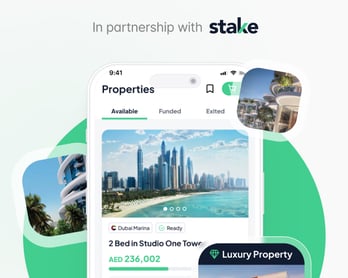If you’ve had your ear to the ground recently in the cryptocurrency industry you may have heard about something called a Token Curated Registry. Many people have been getting super excited about the idea because, if designed properly, they could be some of the most useful value signals in today’s society. This post will dive in on what Token Curated Registries (TCR’s) are on a high level, how they work, and some problems they may face.

Put as simply as possible, a Token Curated Registry is a list. The key difference between lists that we have today and a TCR is that a TCR is maintained in a decentralized manner by token holders who have a financial incentive to do so.
This poses the question: Why do we need a decentralized list when we have perfectly good lists today?
Companies like Google and Yelp do a great job of curating a list of search results and restaurants. Why is there any need to decentralize this?
The reason TCR’s potentially have value is because it aligns all of the incentives of each party involved in that ecosystem. Alignment of incentives allows everyone to benefit without any one party being able to game the system and use it to their advantage.
For example, when you publish restaurant reviews on Yelp for free, you are helping Yelp sell advertising space but are in no way compensated for your contribution. If Yelp were to be a TCR, the community would get value through your reviews as well as you yourself getting value in the form of financial compensation for helping to curate a helpful list of quality restaurants.

In order to explain the value proposition of TCR’s and how they work, let's use the adChain TCR as an example.
Problem: Currently, in order for advertisers to find and purchase ad space on websites, they actively bid on these open spaces on ad exchanges that are quite similar to auctions. The issue is, these ad exchanges are riddled with fraudsters and bots who attempt to fake advertising space in order to steal advertiser funds. It is estimated that approximately $20 Billion in advertising funds was lost to fraudulent parties in 2017 alone.
Solution: The AdChain Token Curated Registry
adChain has launched a token curated registry to attempt to fix this advertiser problem. The adChain registry works like this:
adChain has launched a token curated registry to attempt to fix the advertiser problem that works like this:
- Token Holders/Curators maintain a high quality list that attracts interest from websites to list their domain on the registry
- In order to get onto the list, domain owners must buy adChain token and stake a certain amount (currently 1500) in an application to the list
- From there, token holders decide if the domain is legitimate and whether it should be added to the registry or not. If they believe it is, then the domain is added to the registry after the 7 day wait period
- If they disagree, a curator can challenge the application of the domain to the registry
- This triggers a vote between curators who stake tokens either in favor or against this applicants addition to the registry
- Curators are incentivized to do this judiciously as they well be rewarded for voting in favor of the winning side
- If the application is rejected, the deposit is forfeited and is split between the challenge holder and curators who voted to reject
- If application is accepted, the applicant keeps their deposit and the challengers deposit is forfeited and split between the applicant & curators who voted to accept

As you can see, the concept of token curated registries has the potential to be massively valuable in various industries.
It is important to note that the idea of token curated registries is still quite new and some obstacles have been identified in scaling TCR’s. Two of the most notable obstacles are bribery and tragedy of the commons.
Currently, it’s theoretically very easy to bribe curators to sway a vote within a curated registry. The argument against bribery is that, in the case a registry is compromised, the community can simply fork the code and transition to a new one. Bribery can only last so long as the community is unaware of fraudulent entries.
The Tragedy of the Commons is another obstacle that we’ve seen in TCR’s as well as other blockchains that require active input from users. Many TCR’s have lacked significant activity due to the lack of bootstrapping incentives. More bootstrapping incentives with the combination of better user experiences will drive user activity and bring token-curated registries to the forefront of crypto applications.
It will be awhile before we see any mainstream adoption of token curated registries - but it has some of the most promise of any other crypto application today.
This educational article is provided by Republic to help its users understand this area of the market, it should not be construed as investment advice as it is impersonal, disinterested and was produced by Republic for Republic’s users, without remuneration received or expected.







 Oops! We couldn’t find any results...
Oops! We couldn’t find any results...








1 comment